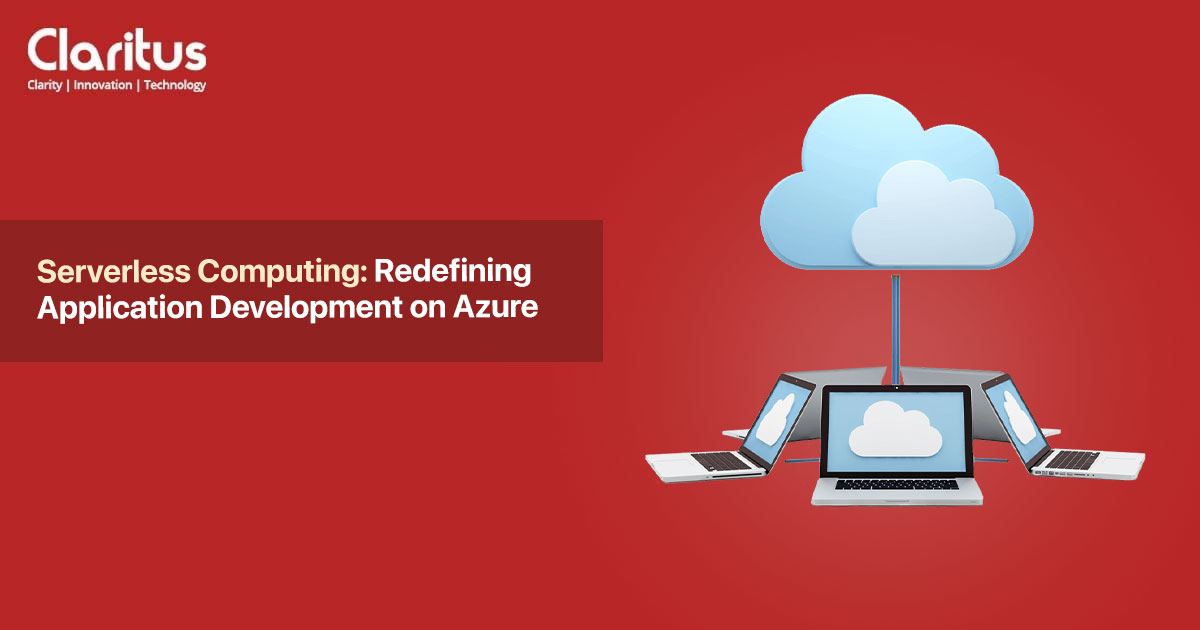Unleashing the Future: Serverless Computing Redefining Application Development on Azure
In the fast-paced realm of technology, innovation is the key that unlocks the doors to new possibilities Among the cloud service providers leading the charge, Azure from Microsoft stands tall, offering a robust platform that is redefining the way applications are developed and deployed. In this blog post, we will delve into the captivating realm of serverless computing on Azure, exploring its unparalleled benefits, diverse use cases, and the promising future it holds in the realms of cost optimization, scalability, and rapid deployment.
Specifically, when we delve into the Azure ecosystem, Microsoft’s cloud computing platform, the synergy between serverless computing and Azure becomes a force to be reckoned with.
The Rise of Serverless Computing: A Game-Changer
Imagine a world where you don’t have to worry about provisioning or managing servers. Serverless computing brings this vision to life, allowing developers to focus solely on writing code, without concerning themselves with the underlying infrastructure. Azure has been at the forefront of this revolutionary change, offering developers a platform where they can build and deploy applications seamlessly.
Benefits of Serverless Computing on Azure:
Cost Optimization:
Serverless computing on Azure is a game-changer for cost-conscious businesses. Traditionally, provisioning servers meant dealing with the fixed costs of hardware, maintenance, and more. With Azure’s serverless model, you only pay for the compute power you consume, leading to significant cost savings. It’s a pay-as-you-go model that aligns perfectly with the dynamic needs of modern businesses.
Scalability at Your Fingertips:
The beauty of serverless computing lies in its inherent scalability. Azure’s serverless architecture ensures that your application scales effortlessly, automatically adjusting to varying workloads. Whether it’s handling a sudden surge in traffic or adapting to a decrease in demand, Azure’s serverless capabilities ensure your application remains responsive and available without any manual intervention.
Rapid Deployment:
Time-to-market is a crucial factor in today’s competitive landscape. Azure’s serverless computing facilitates rapid deployment by abstracting away the complexities of infrastructure management. Developers can focus on writing code and deploy it with a few clicks. This not only accelerates the development process but also allows for quick iterations, making it easier to adapt to changing business requirements.
Use Cases:
Web Applications:
Serverless computing on Azure is a perfect fit for web applications. With Azure Functions, developers can build and deploy microservices that automatically scale based on demand. This is particularly beneficial for applications with unpredictable traffic patterns, ensuring optimal performance without unnecessary infrastructure costs.
Event-Driven Processing:
Azure’s serverless offerings are well-suited for event-driven architectures. Whether it’s processing data from IoT devices, reacting to changes in a database, or responding to HTTP requests, serverless functions can be triggered by a variety of events. This flexibility allows developers to design applications that respond dynamically to real-time events, providing a seamless and efficient user experience.
Data Processing and Analytics:
Serverless computing is a natural fit for data processing and analytics workloads. Azure provides services like Azure Durable Functions, which enable the creation of workflows that can handle complex, long-running tasks without the need for manual intervention. This is particularly beneficial for scenarios where large volumes of data need to be processed quickly and efficiently.
Future Prospects:
The future of application development is undoubtedly intertwined with serverless computing, and Azure is positioning itself as a leader in this space. As technology evolves, we can expect to see even more advanced features and integrations within Azure’s serverless offerings.
Hybrid Cloud Integration:
Azure’s commitment to hybrid cloud solutions ensures that serverless computing seamlessly integrates with on-premises infrastructure. This provides businesses with the flexibility to leverage the benefits of serverless computing while still maintaining control over certain aspects of their IT environment.
Advancements in Serverless Security:
As serverless adoption continues to grow, so does the need for robust security measures. Azure is investing heavily in enhancing the security posture of serverless applications, ensuring that sensitive data is protected, and potential vulnerabilities are mitigated. This ongoing commitment to security is crucial for gaining the trust of businesses in various industries.
Integration with Emerging Technologies:
Serverless computing on Azure is expected to play a pivotal role in the integration of emerging technologies such as artificial intelligence (AI) and machine learning (ML). Developers can seamlessly incorporate serverless functions to process and analyze data, making it easier to leverage the power of AI and ML in their applications.
Conclusion:
In conclusion, serverless computing on Azure is more than just a technological trend – it’s a fundamental shift in how we approach application development. The benefits of cost optimization, scalability, and rapid deployment make it a compelling choice for businesses looking to stay ahead in the digital era. As we gaze into the future, the synergy between serverless computing and Azure promises an exciting journey of innovation, where developers can focus on what they do best – creating exceptional applications that redefine the boundaries of what’s possible in the digital landscape. The time to embrace the power of serverless computing on Azure is now, as it reshapes the future of application development one function at a time.

